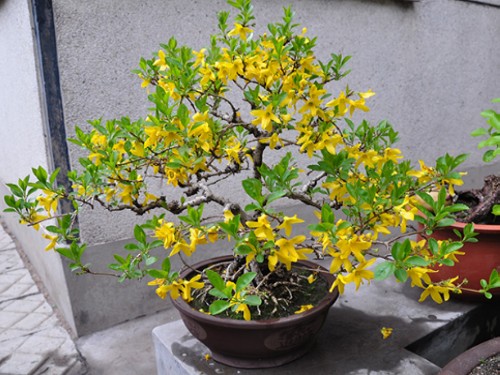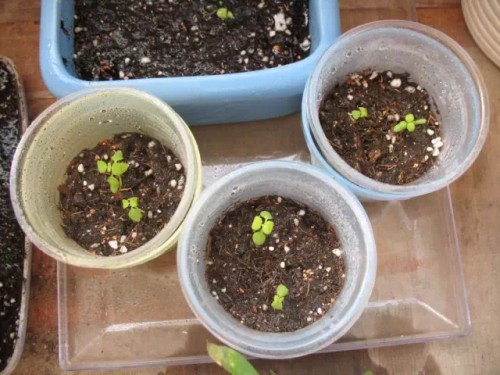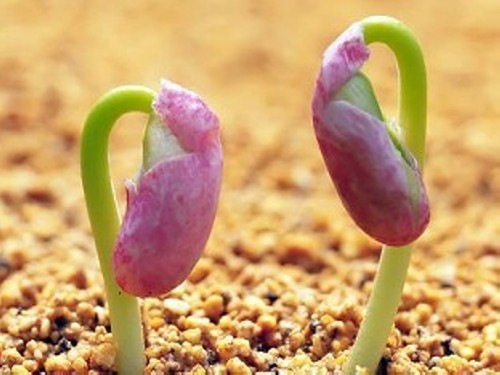Planting technique of Camellia oleifera
Camellia oleifera is a kind of tree that will change its style and appearance with the change of the four seasons. When the branches and leaves are sparse in spring, Ching Ming Festival will blossom beautiful yellow flowers before and after; in summer, leaves will grow and bear pods; in autumn, the branches and leaves will flourish, showing a green scene; in winter, the withered branches and leaves show a bleak beauty. This is the unique flavor of the yellow-flowered blueberry in spring, summer, autumn and winter. It is an excellent street tree and can also be planted in courtyards, campuses, residential areas and so on.

Camellia oleifera is fond of high temperature, and the suitable temperature for growth is 20-30 ℃. Winter needs to be warm and sheltered from the wind. The sandy loam rich in organic matter is the best cultivated soil. It can be propagated by sowing, cutting or high pressure, but sowing is the main method, and spring and autumn are the suitable time. The flowering period is from January to March and the fruiting period is from July to August.
Planting techniques of Camellia oleifera
1. Temperature environment
Suzuki is suitable for growth at 23-30 degrees and is not cold-resistant, so it is only suitable for cultivation in tropical and subtropical areas in China.
Strong light is also required in the seedling stage, especially when sowing and raising seedlings in the greenhouse environment, it is very easy to cause weak seedling growth and quenching disease due to lack of light and ventilation.
Camellia oleifera
2. Soil fertilization
The nursery for cultivating large seedlings of Camellia oleifera should choose places with loose and fertile soil, good irrigation and drainage, plan and sort out the ditches for drainage and irrigation, and plant about 3000 plants per mu. 250g compound fertilizer or 1kg organic fertilizer per hole should be used as base fertilizer, and the base fertilizer should be confiscated and mixed with the soil before planting seedlings. When planting seedlings, it is necessary to remove the seedling bag and plant it steadily.
3. Plant control.
Camellia oleifera seedlings grow fast, the trunk is soft, easy to lodge and sprout, and the natural plant type is often not good. In order to get the upright and straight plant type, after planting, stand about 2 meters high next to the seedling from the height of 30-50 cm to support the bamboo to guide the plant to grow upright, and the seedling should be tied up for each height of 50 cm. Pruning and shaping should be carried out regularly during the growth period, the low meristematic lateral branches should be cut off, and the diseased branches, dead branches and even lateral branches should be cut off after falling leaves in winter, so as to keep the trunk growing straight. As the bark of Camellia oleifera is thin, it is easy to be damaged by friction of the supported bamboo pole, and it is easy to form a large wound after the damage, which affects the appearance, so it is necessary to cushion the contact parts of the trunk and the supporting bamboo rod with soft cloth to avoid the damage of the bark. When the trunk is 1.8-2 meters high, the top branches are retained to form a crown. After 3-4 years of field cultivation, the plant is more than 3 meters high and 4-6 cm in diameter.
4. Cultivation methods
Suitable row spacing 2.5m*2.5m, hole digging at least 50cm*50cm*40cm, fertilization generally about 10 jin, mixed 75% livestock and poultry fertilizer, 18% phosphate fertilizer, 7% potassium fertilizer, trace zinc sulfate (promote tillering, branching, make the crown full) as base fertilizer. Topdressing should be applied frequently and thinly, once every two months, urea for the first time, and compound fertilizer later. The branches of the golden flower wind Suzuki are soft, so be sure to stand upright.
Time: 2019-05-25 Click:
- Prev

The planting method of goldfish grass
Goldfish grass is a flower that blooms in summer and autumn. it is widely planted in Chinese gardens. it is suitable for planting in flower beds and flower borders, especially with zinnia, petunia, marigold, string of red and so on. High-sex varieties can be used as background planting, while dwarf varieties are suitable for coffin rocks or windowsill flower ponds, or edge coffins. This flower can also be used as a cut flower.
- Next

Planting method of potted Zhu Dinghong
Zhu Dinghong's flowers are huge and colorful, and its roots are familiar with garlic, so it is also a perennial flower of the family Amaryllidaceae. Because his flowers are big and colorful, everyone likes to put Zhu Dinghong in his living room, study and other places to beautify his home.
Related
- Fuxing push coffee new agricultural production and marketing class: lack of small-scale processing plants
- Jujube rice field leisure farm deep ploughing Yilan for five years to create a space for organic food and play
- Nongyu Farm-A trial of organic papaya for brave women with advanced technology
- Four points for attention in the prevention and control of diseases and insect pests of edible fungi
- How to add nutrient solution to Edible Fungi
- Is there any good way to control edible fungus mites?
- Open Inoculation Technology of Edible Fungi
- Is there any clever way to use fertilizer for edible fungus in winter?
- What agents are used to kill the pathogens of edible fungi in the mushroom shed?
- Rapid drying of Edible Fungi

